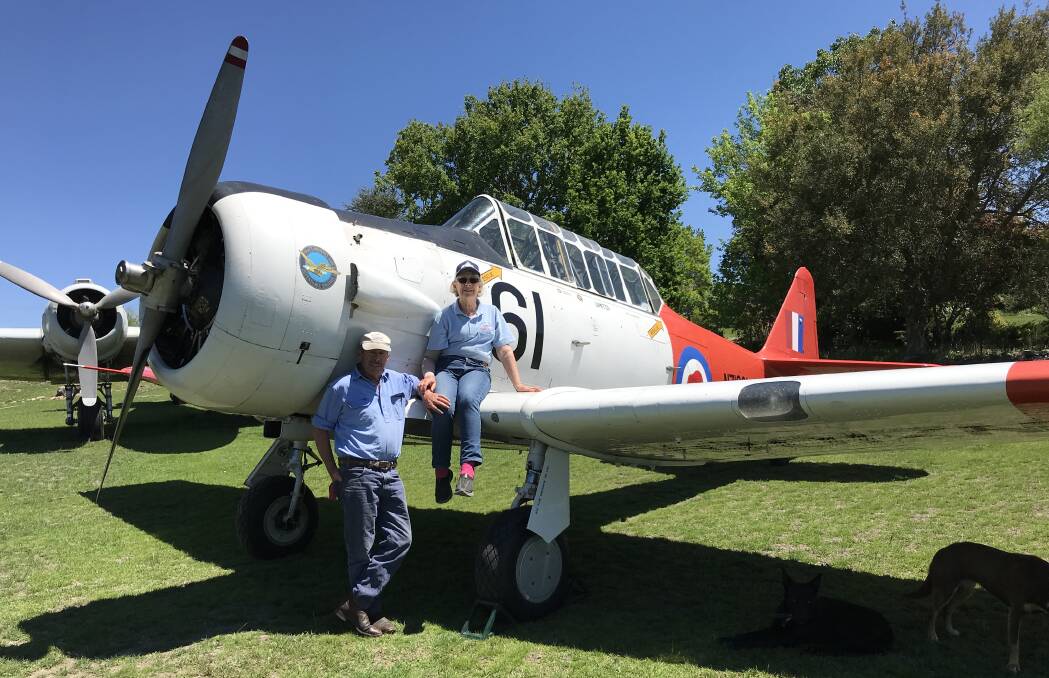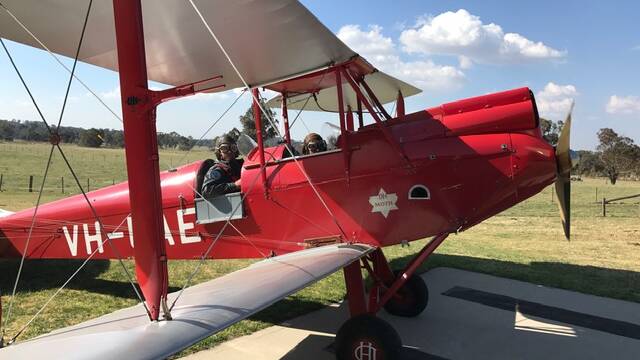
When Walcha grazier David Salter was five years old, he told his aunt he wanted to be a pilot when he grew up. What nobody anticipated though, was his future personal passion and penchant for aviation, and collecting vintage aircraft – a couple of which will attend the Wings over Walcha airshow this weekend.
Subscribe now for unlimited access.
$0/
(min cost $0)
or signup to continue reading
“Well I have learnt to fly, but I still haven't grown up,” Mr Salter said.
“It is a team effort with my wife Carolyn and probably the most interesting one we own is the Gipsy Moth, which was first flown in Australia in 1925 and is the oldest registered aeroplane in Australia, and the second oldest Gipsy still flying, in the world. We bought it in 2001, and borrowed all the money to buy it, to save it from possibly going overseas.”
The Gipsy Moth will be on the show this Saturday, and the couple will be on hand to talk about this unique piece of aviation history.

Another aircraft the Salters will be taking to the show is the North American Harvard.
“The Harvard is a WW2 trainer that was used for advanced training by most Air Forces in the world and was manufactured in 1942,” Mr Salter said.
“Ours was in the Royal New Zealand Air Force (RNZAF) and we have kept it as it was in the RNZAF until decommissioned in the early '70s. I fly it at airshows all over the place, flying formation with other similar aircraft, and aerobatic displays. Mainly I fly at the Temora Aviation Museum these days, and of course, Walcha.”
Only these two aircraft will be at Wings over Walcha on Saturday but the Salters also have a Bell 47 helicopter (the same type as used in the TV series ‘Mash’), a former super spreading deHavilland Beaver and a land-bound C47.
“The Bell 47 was the first helicopter to be certified for commercial use in 1946,” said Mr Salter.
“It was the first helicopter to be used for commercial helicopter mustering in Australia, in September 1968, so has just passed the 50 year anniversary of a momentous event, when you consider that most cattle stations in the north, have their own helicopter these days.”
Mr Salter said the deHavilland Beaver is well known in this Walcha district as being the main aeroplane for spreading super for about 40 years.
“I am getting very close to getting ours flying again after having been stored for the last 20 years, “ he said.
“Beavers are well known in North America and Canada today as real workhorses, mostly on floats, which really says something as they were first flown soon after WW2.
I spent nearly 25 years supering in Beavers
- David Salter
“I spent nearly 25 years supering in Beavers mostly in the Walcha district and spread about 185,000 tonnes of super in that time. That's a lot of fertiliser.”
There is one aircraft the couple own though that will not be taking off again.
“The C47, which is the military version of the DC3, is the only aeroplane we own which doesn't fly and probably won't as it has a few corrosion issues,” Mr Salter said.
“It would also be far too expensive for us to get airworthy and to operate. So it is mainly a case of preserving the aeroplane, saving it from the scrap metal merchants. It was built around 1942 and saw service with the RAAF before being gifted to the PNG Defence Force, and then returning to Australia about thirteen years ago.”
All aircraft (except the C47) are flown regularly and have different uses.
“We are able to keep in contact with lots of people all over the place, whether it be vintage, warbird or helicopter people,” said Mr Salter.
“Flying is a great way to get around the countryside, but as usual, it is the people that make it the most enjoyable and interesting.”
“After over 50 years in commercial aviation I still get a great deal of satisfaction from flying, and showing other people the joys of being aloft.”
The 2018 Walcha Airshow and AOPA Mobile Simulation Centre will be at Walcha Aerodrome from 8.30am on Saturday November 3.


